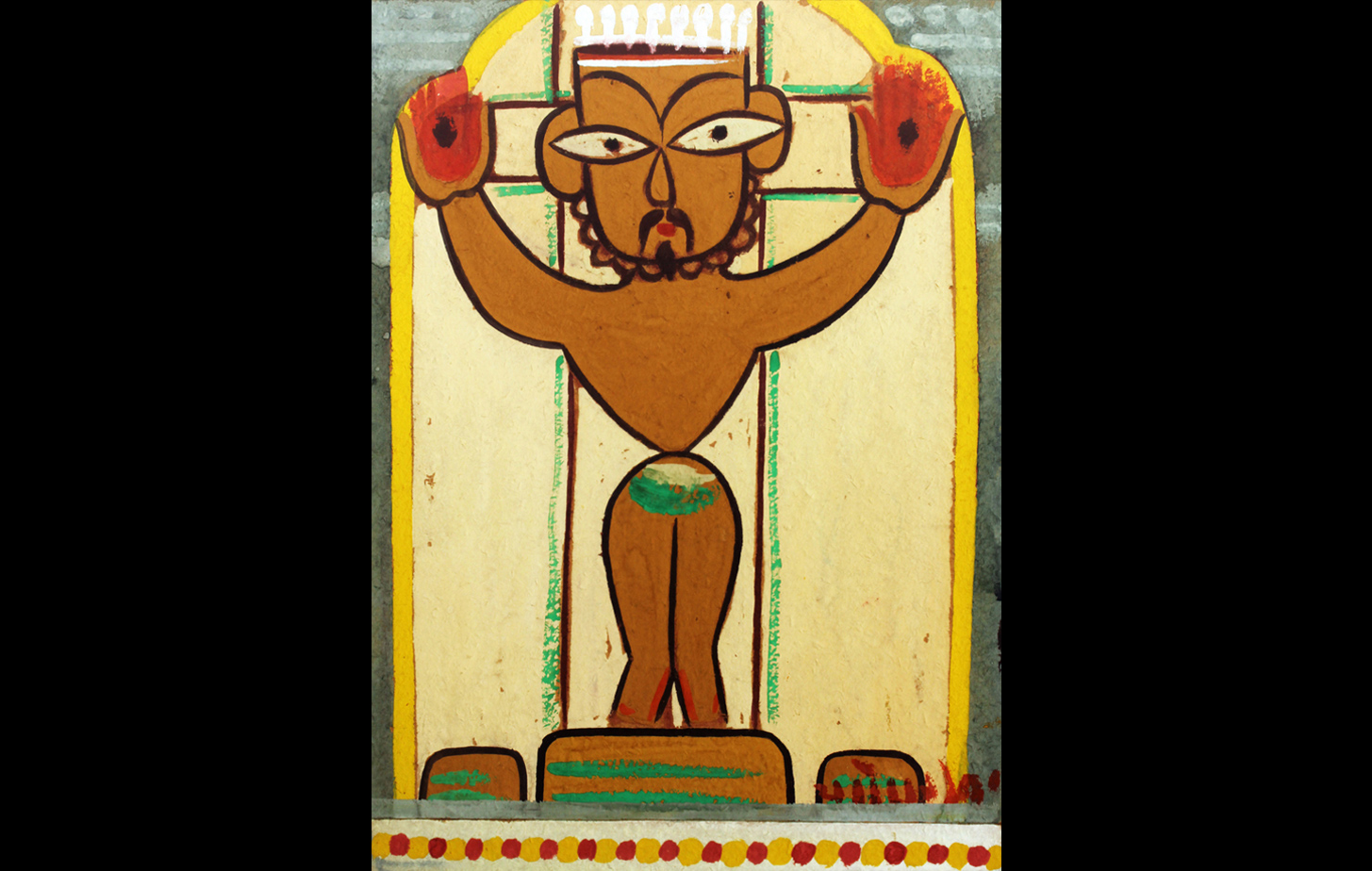
Jamini Roy was probably the first artist to depict Christ in an Indian vocabulary. He was looking to test the effectiveness of his bold line and flat colour technique on a subject which was remote from his personal life. Being an orthodox Hindu who had never read the old or new testaments, Roy saw the depiction of Christ as the perfect opportunity. He studied ancient Christian iconography and photo reproductions of renaissance masters and declared his aim to convey the essential human characteristics of Christ through symbolism. The figure of Christ in his paintings were painted in his characteristic style- almond eyes, sharp chips, a voluminous body. Painted in earthy colours of maroon, orange and brown, these images were perhaps the first popular renditions of Christ in strict Indian vocabulary. The Crucifixion and the Last Supper were his most used narratives. The peculiar aspect of the Crucifixion paintings is that they are devoid of any suffering generally seen in Christian iconography. Instead, Christ’s face is tender and looks at the viewer directly causing a sense of powerful discomfort.
Jamini Roy created several paintings and drawings on the theme of ‘Crucifixion’. In this painting, Christ is shown in a beautiful orange-brown body with only two strokes of white and green paint to indicate his waist garb. The background is multi-layered and contrasting, bringing Christ into prominence. His stature is also indicated in the proportion of his body, where his face and the upper half are more prominent in comparison. The bottom of the painting ends with a line and dot pattern, influenced by alpana designs made in Bengali villages.
Click here to read more on the artists from the Bengal School of Art.
Title
Untitled (Crucifixion)Period
20th centuryArtist
Jamini RoyMedium
Tempera on cardboardDimensions
H: 95 cm x W: 61 cmAccession No.
2015.1.81Genre: Modern & Contemporary Art
